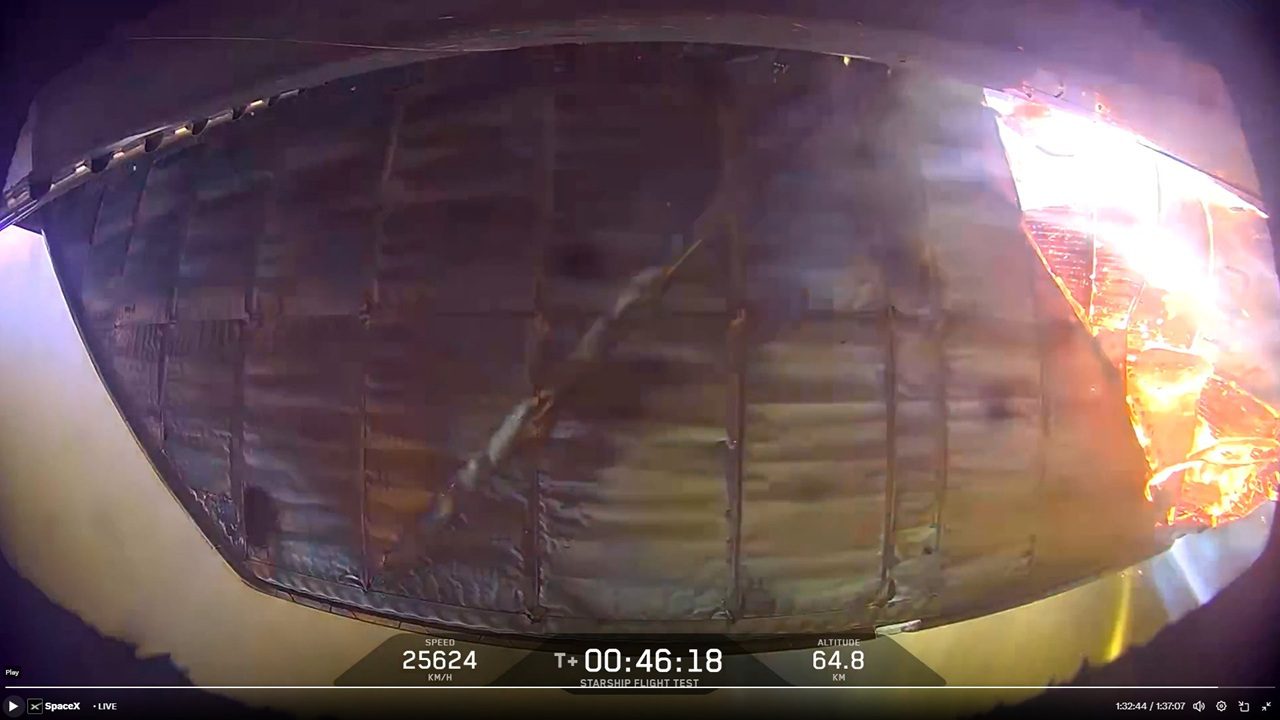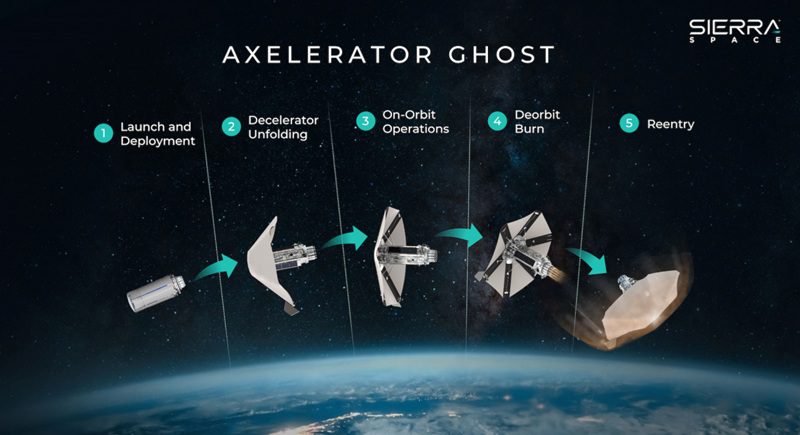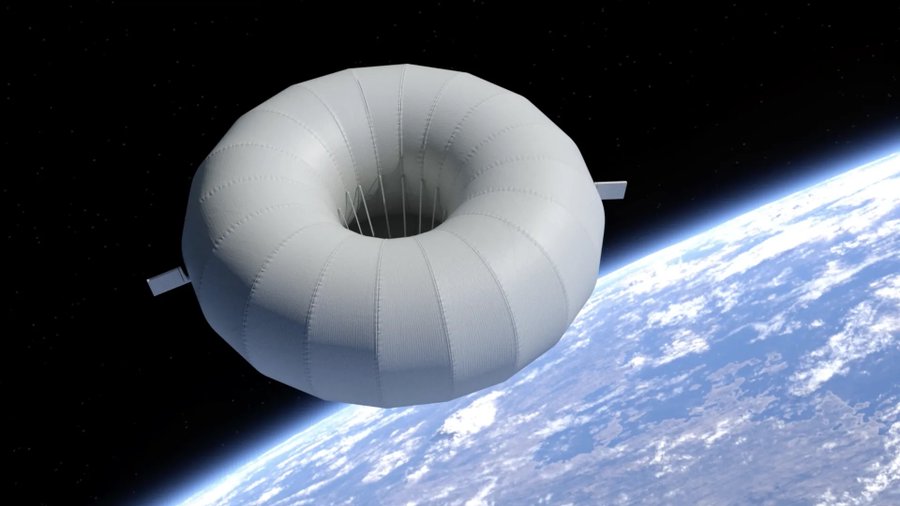At the UK Launch Symposium held at the Roehampton Vale Campus of Kingston University which met in May, which had most of the UK’s space launch engineers and rocket scientists in attendance, there was a real feeling that the nation needs a launch vehicle – not only for national pride and security – but also to let it fully compete in the world space market. However, there are hurdles, most of which involve development cost, launch costs or markets.
Introduction
While the UK is very strong in some aspects of spacecraft engineering, applications and business, it remains weak in launch vehicles. The United Kingdom has the embarrassment of being the only nation to have developed an orbital launch capability with the Black Arrow rocket, only to cancel it in the early 1970s in favour of spending money on the development the Anglo-French supersonic airliner, Concorde instead. While UK did carry on being a major participant in European launch programmes, beginning with ELDO and later in the ESA Ariane 1-4 launch vehicle programme, in the 1980s the UK government withdrew from taking any part in ESA’s successor launch vehicle – the Ariane 5. While at the time there was resistance to paying for the launch of “two Frenchmen and some sandwiches” in the subsequently cancelled Hermes mini-shuttle (for which the Ariane 5 was originally sized for), there is now a retrospective acceptance that that for strategic and economic reasons, moving out of launch vehicles was probably a mistake for Britain.
That was then and this is now. As it it enviously eyes space launch nations like China and India, UK Government now longs to have its own launch vehicle, not least to be able to independently launch its own spy satellites. Meantime the government has also realised that that aerospace sector is one of the few high tech industries that the UK can still genuinely compete in. Given UK Government’s stated aim is to gain a 10% of the World space markets, it, along with its US Space Agency, has realised via its National Space Technology Strategy that it needs to invest in space launch technology.
And that is what it has begun to do, making an initial £60 million investment in the air-breathing rocket research currently being done by Reaction Engines Limited. While it is accepted that this move was a good one for the long term interest of the United Kingdom, thoughts have turned to whether the UK could get an independent launch capability in the nearer term. How this could be done and whether it is economically viable were the main questions that drew the participants to the debate in Kingston.
Go for space growth needs a launch vehicle
Nick Cox of the UK Space Agency noted the “potential of space to drive the economy” noting that the UK government investment into the air-breathing rocket research represented a “stake in the ground” for the future. While there are high hopes that eventually the Skylon space plane, the chairman of the symposium, Adam Baker, former space engineer and lead space lecturer at Kingston warned that such an advanced craft would take a relatively long time to become a reality.
Baker explained that there were also other launch projects competing for resources, not least the European Space Agency’s planned new expendable launch vehicle Ariane 6. Baker’s stated his opinion that the Ariane 6 was an “uncompetitive dinosaur” before it has even been built. Most of the audience agreed with that notion and even Nick Cox representing the view of the UK government attending noted that it was unlikely that Britain would to want to invest in that launch vehicle.
Nearer term, as he noted the rise of small satellites and how getting them into orbit was becoming a block, Baker suggested that it might be possible to develop an economic to operate British cost/efficient smaller launch vehicle with payload of 100-200kg to a sun-synchronous near polar low Earth orbit. Baker suggested that such a vehicle would make a positive contribution to the Government’s Investment Growth Strategy for space.
Nevertheless, the conference came up with the key questions that have to be answered before any such project could proceed: How much would such a vehicle cost to build? Is there are market for it? Can it be operated at a price that would be attractive and could pay back its development costs? What new technologies would be needed or could it use COTS (Commercial-Off-The-Shelf) hardware? Where would it be launched from?
Is there a market for a UK small launch vehicle?
On the first point Nick Cox warned that “small launchers only have a marginal economic case”. While the rise of smaller satellites and cubesats is well noted, the figures are nevertheless startling. According to the Seradata SpaceTrak database, of the 217 spacecraft which were attempted to be launched into orbit (on 82 launches) during 2013, 82 (38%) were below 5kg in mass.
Andy Bradford of Surrey Satellite Technology Limited (SSTL) described how sensor communication was one of the big growth applications for such spacecraft. Bradford described how having such a small launch vehicle would give his firm, which is a specialist in small satellites, a marketing edge in being able to offer “delivery to orbit” contracts. Dedicated launches always have a certain edge over the unpredictability of shared launches.
As an example, Bradford noted that some technology demonstration satellites due to fly on shared launches can effectively become obsolescent by the time they are actually flown. Having said that Bradford cautioned that price would always be the main driver as to which launch vehicle or piggy-back payload opportunity was chosen. A small 100kg satellite might typically have to pay US$5 million for a shared launch and that price and preferably much less should be the target. There is no current viable dedicated launch solution at this price though once the US Super Strypi rocket proves itself this may change.
And there is the rub. The estimates made during the symposium were that a typical UK small launch vehicle would take at least £500 million (US$600 million) to develop and thus would need a launch price, given the number of projected launches per year, of circa £10 million (US$12 million) to repay this investment…an amount that is more than twice what a small satellite owner or manufacturer can probably afford.
It gets even worse when the size of the market and launch vehicle competition is considered. Analysis done by Newton Launch Systems which counts Adam Baker as a director, shows that with only a US$100 million of World and European launch revenue available in the sector, there is barely enough to support even just one small launch vehicle. As for the economic effectiveness of competing designs, Martin Heywood, Managing director of Newton Launch Systems remains especially cagey. “You can put wings on a turd and make it fly if you want to,” he curtly noted.
Experience shows that small launcher projects are “here today, gone tomorrow”
The small launch vehicle sector is already famously “flaky” with many launch vehicles remaining paper projects, while even those that do reach operational status do not manage to stay around for long. Probably the biggest recent setback in small launch vehicles was the cancellation of the very low cost to orbit Falcon 1 rocket family by Elon Musk and his SpaceX concern. Officially SpaceX decided to do this noting that their revenues would probably never pay back the investment made (this was against their original claim) as the realised that larger launch vehicles were much more economically feasible.
Whether the Falcon 1’s early demise was purely down to this conversion, or had been planned all along, in effect Falcon 1 became just a technology test rocket for their larger and higher paying Falcon 9 family launch vehicles. The effect of the Falcon 1 withdrawal was significant. Andy Bradford of SSTL admitted that the cancellation of this rocket had been a blow to small satellite manufacturers who had been hoping to be able to launch 400kg satellites into Sun-synchronous orbit for less thanUS$12 million. At the time of the cancellation Elon Musk was actually a shareholder of SSTL.
Of course there have been some beneficiaries of the Falcon 1’s demise. Europe’s very expensive Vega and the USA’s even more expensive Pegasus XL launch vehicle suddenly became marketable again, while Russian and Ukrainian launch providers were again begged for new shared launch opportunities. Bradford made the point that his firm usually preferred to share launches as they simply could not afford dedicated rockets for their smaller 10-200kg satellites. He suggested that launch prices would have to be under US$5 million before such dedicated launches became attractive.
It was not just the Falcon 1 that that was cancelled. The US Army’s small SWORDS project to build a similar three-stage launch vehicle using pressure fed rocket engines using differential thrust steering has also unceremoniously been cancelled in March 2014. Its original target was to be able to launch 45kg payload to LEO for just US$1 million per launch. Other similar small satellite launch vehicle projects have similarly come and gone.
Nevertheless, other start-ups just keep coming. One is the US Firefly effort which aims to develop its Firefly Alpha two-stage vehicle using pressure-fed LOx/Methane burning engines. With it, the Firefly outfit hopes to attain a payload to LEO of 400kg.
So what should a UK small launcher look like?
One way to reduce costs is to have a low cost operation and infrastructure along with low cost development. Several firms are now examining using reusable first stages either using wings or rocket engines to effect a landing. Noting that development cost is a key driver as to the eventual launch price offered, some have suggested using commercial-off-the-shelf (COTS) components as much as possible. Simon Feast of Reaction Engines presented a design study conducted (during his Christmas break) by innovative rocket scientist and engineer Alan Bond, who is famous for his work on the Skylon Space Plane and its SABRE air breathing rocket engine.
The design study dubbed Blue Boomerang employs a bought in Russian Engine the LOx (liquid oxygen)/kerosene burning RD-58M used by the Zenit rocket on its upper stage. By using four of these for the first winged reusable stage (which also employs a small Williams FJ-33 jet engine for the return) and a single one on an expendable stage with 4 Moog small HTAE engines on a third expendable stage, Bond managed to design a launch vehicle capable of carrying 200kg into a Sun-synchronous orbit. The development cost would be £500 million (US$600 million) and have a launch price of £10 million (US$12 million) at a flight rate of six launches per year. As already mentioned, this price would be too dear for most operators while the use of Russian hardware in the current geopolitical situation was criticised.
The alternative suggestion to reducing cost is to build everything yourself – retaining the cost/benefits in house as much as possible. This is the apparent approach is used by SpaceX which manufactures about 90% of its launch vehicles. Using the same strategy, the Norweigian rocket firm NAMMO is planning to use an HTPB/H2O2 burning hybrid rocket engine it is developing itself. Onno Vaberne of NAMMO noted that early examples will be used for the Bloodhound attempt on the land speed record. Eventually the rocket engines will be used in bundles for a three-stage launch vehicle called North Star with which NAMMO claims to be able to launch 25kg payloads into a sun-synchronous low Earth orbit (LEO) for less than US$1 million. The Andoya rocket range off Norway is suggested as the launch site.
Emulating the all in-house construction approach of SpaceX and copying their partial reusable first stage concept is the small UK launch firm Tranquility Aerospace. While not quite the size of the other projected entrants to this competition, its two-stage Devon Two (Devon 2) rocket employs a vertical launch/vertical landing reusable Devon One sounding rocket as its first stage. Under current plans, it will be able launch 4kg payloads into orbit for less than US$10,000 per kg by the end of 2017. The Tranquility Aerospace’s head Ray Bainbridge described the main engine noting it would have a thrust of 5kN and using kerosene and H2O2 as propellants with a 141 second burn time. The firm hopes to make initial flights of Devon One (Devon 1) later this year. If they can make it work then they envisage building larger vehicles using several Devon One’s strapped together.
On the other side of the pond there is a new small launcher which is closest to entering full operation: the Super Strypi/Spark rocket which is due to be launched later this year. The three-stage spin-stabilised all-solid rocket has been developed with industrial cooperation by the University of Hawaii. It can reportedly carry 200-25okg to a sun-synchronous orbit for only US$5 million.
Another design is US two-stage rocket called Firefly Alpha is based around a LOx/methane burning first stage using a plugged aerospike engine. It is expected to lift up to 409kg to LEO and 218kg into a Sun-synchronous/polar orbit for less than US$9 million per launch.
While two and three stage designs predominate, who is to say that using a single stage all the way to orbit would not be possible for a small payloads? From an economic point of view, a Single-Stage-To-Orbit (SSTO) expendable rocket might be the best and simplest solution for a small launcher. The Romanian Cosmonautics and Aeronautics Association (ARCA) is nearing completion of its single-stage-to-orbit liquid fuelled expendable rocket called Haas 2C which has payload of 50kg to LEO. While they missed their officially targeted 2013 first launch date, progress continues including the completion of a test stand for its LOx/Kerosene powered Executor rocket engine. For larger payloads of up to 400kg ARCA plans to build a two-stage version of the rocket.
Is air launch the way to go for cheap launches?
While David Ashford of Bristol Spaceplanes has long been a proponent of air launched vehicles, reminding the symposium that UK might have been first into suborbital space by having a Saunders-Roe SR-53 rocket plane fly off the back of a Vickers Valiant jet bomber, others are now converts into air launched thinking. The Airborne Launch Assist Space Access (ALASA) programme of the US defence technology agency DARPA plans to develop and air launched rocket to carry a 45kg payload to LEO for under US$1 million. The air launch concept employs a 7.3m long vehicle with forward canted liquid fuel engines and disposable fuel tankage and is carried on a fighter aircraft. As a forerunner to this craft, Ventions LLC plans to produce an air launched (again by an F-15) technology test vehicle dubbed Small Air Launch Vehicle to Orbit (SALVO) capable of carrying 3U cubesats into orbit.
Virgin Galactic has also decided to go with an air-launched orbital vehicle concept using a liquid fuel rocket dubbed LauncherOne. It aims to place a 200kg payload into LEO for US$10 million.
Using liquid fuel rocket technology, again from Ventions LLC, the US-based Generation Orbit Launch Services is planning an air dropped launch vehicle called the Go Launcher which is planned to carry 40kg payloads to LEO for $1 million.
Similarly, illustrations showing later versions of XCOR Lynx suborbital craft launching an upper stage deployed from dorsal pod have been released.
Where to launch from? Actually two different types of UK Space Port are needed
Adam Baker suggested that any such spaceport would need to be established by 2018. While the Civil Aviaiton Authority (CAA) is likely to get the role as the main agency in charge of regulating spaceflights, it has as yet been formally selected. Nevertheless, the CAA is already researching the issues. Having already visited the new spaceports being built in America, Andy Badham of the Civil Aviation Authority noted that actually two different types space ports would probably be needed: one for the use of vertically launched rockets, and one for the use of horizontal take off suborbital and even orbital air launched concepts, and even eventually single-stage-to-orbit rocket planes. The former vertical launch type could use a very basic “green field site” while the latter horizontal take off ones could make use of an already existing aerodrome/air base if one was found in a suitable location.
Badham also reminded the audience that a very long runway would be needed if single-stage-to-orbit spaceplane operations are to be made from the same site given they would have very high speeds at lift off (e.g. Skylon’s rotate speed is Mach 0.5). Badham noted that the CAA was making studies into suitable locations both within the main islands of the United Kingdom and on its overseas territories.
As to the location of a vertical launch space port, several locations have been analysed both within the main islands of the UK but also on its overseas territories. Given that near Polar sun-synchronous orbit launches would probably be the main market for such a small launch vehicle, Badham admitted that a site in Northern Scotland was a favourite location for northern tracked orbital launches. Of course, flights over populated areas would not be allowed – nor would those with tracks too close to major air routes.
Space launch consultant Richard Osborne reminded the symposium that launching eastwards for maximum benefit from the Earth’s spin from candidate sites on the East of England would thus be prevented, though amusingly noted that it would, at least, be a “payback for the V2” if one did accidentally crash onto Germany. One site which seems ideal for launches in all direction is the UK territory of Ascension Island in the Atlantic Ocean. However, some at the symposium suggested that a UK-based launch site would have much lower travel and logistical costs – another factor in the overall cost of launching a satellite.
Badham admitted that the CAA’s studies had not, as yet, taken into account of the possible need to cater for vertically landed stages as well as SpaceX and the small UK-based launch firm Tranqulity Aerospace plan to do.
Badham noted that whichever launch sites are chosen, the United Kingdom will not be making the mistake of excessively spending on a “beautiful” space port terminal at the expense of investment into the actual flight hardware as Virgin Galactic is accused by some of doing. With respect to allowing suborbital human flight operations for “space experience flights” Badham noted that the CAA was likely to follow the lead of the Federal Aviation Authority in classing such craf that the likes of Virgin Galactic want to operate as “experimental craft” allowing flights to carry “participants having informed consent” rather than “passengers.” Badham admitted that the term “informed consent” had its own issues especially with respect to US ITAR restrictions on the transfer of technical information as some affluent Chinese would-be space travellers recently found out.
Conclusion: If you build it they will come…but only if it is cheap enough
While the UK has wisely seen the long term potential of reusable air breathing rockets such as Reaction Engines’ Skylon, with respect to smaller launch vehicles the message is mixed. There seems to be a genuine wish to have one – but only if its development can be financed in a partly government-funded way. Getting the government to part-finance such a project should be possible – especially considering its national defence/security impact. And while Private Finance Initiative (PFI) contacts have, for the most part, been poor value for money, especially in the financing of schools and hospitals, in facd the only one which really worked out was in space: the Skynet military communications satellite system, which had its satellites privately financed in return for guaranteed service contracts. So if satellites can be financed that way – why not launch vehicles? In truth purely commercial financed launch vehicles are very rare birds. For despite SpaceX’s claims about the Falcon launch family being purely commercially financed, it is, in effect, part-subsidised by NASA money.
That is not to say that purely commercial launch vehicles will never happen. Despite the high hurdles to building and operating a small commercial launch vehicle successfully, some seem to have ignored market studies and their negative outlook and just got on with building one. Their thinking appears to be “if you build it they will come” albeit with the realisation that they will only come if it is cheap enough to launch on. However, all great journeys start with small steps and as such, we find ourselves rooting for Tranquility Aerospace! Go Tranquility! Go Devon One!
With respect to Reaction Engines (for which this writer is a small shareholder) instead of designing mainly expendable rockets using Russian rocket engines, perhaps Alan Bond should concentrate on an orbit capable test vehicle for his SABRE engine during his next Christmas break. As it tests out the high Mach number flight regime, such a reusable test vehicle might actually be basis of a new small launcher. For while such a craft will not optimised for maximum payload efficiency, it might just be able to launch small but useful payloads to a Sun-synchronous near polar orbit.
To help Alan Bond along in his next Christmas holiday endeavour, your would-be rocket scientist of a correspondent handed Bond’s apprentice, Simon Feast, a notebook sketch of what such a vehicle might look like: a cross between souped-up V1 flying bomb and a D-21 drone. Well you never know, if they can make it look enough like an orbital cruise missile, they might just get the UK’s Ministry of Defence to finance it. Then again there is always Germany. 🙂
Addendum: There are more smaller “microlauncher” projects underway. For a brief run through please go here.
This Article was updated: 1st September 2014
Update: Another small satellite launcher has thown their hat into the ring. The US/New Zealand firm Rocketlab is developing a two stage launch vehicle able to lift a 110kg payload to LEO for less than US$5 million. The engine uses LOx/kerosene as its propellants.
Another US start-up firm Cubecab plans to offer a service to launch 1U and 2U cubesats via an air launched rocket of unspecified design.







